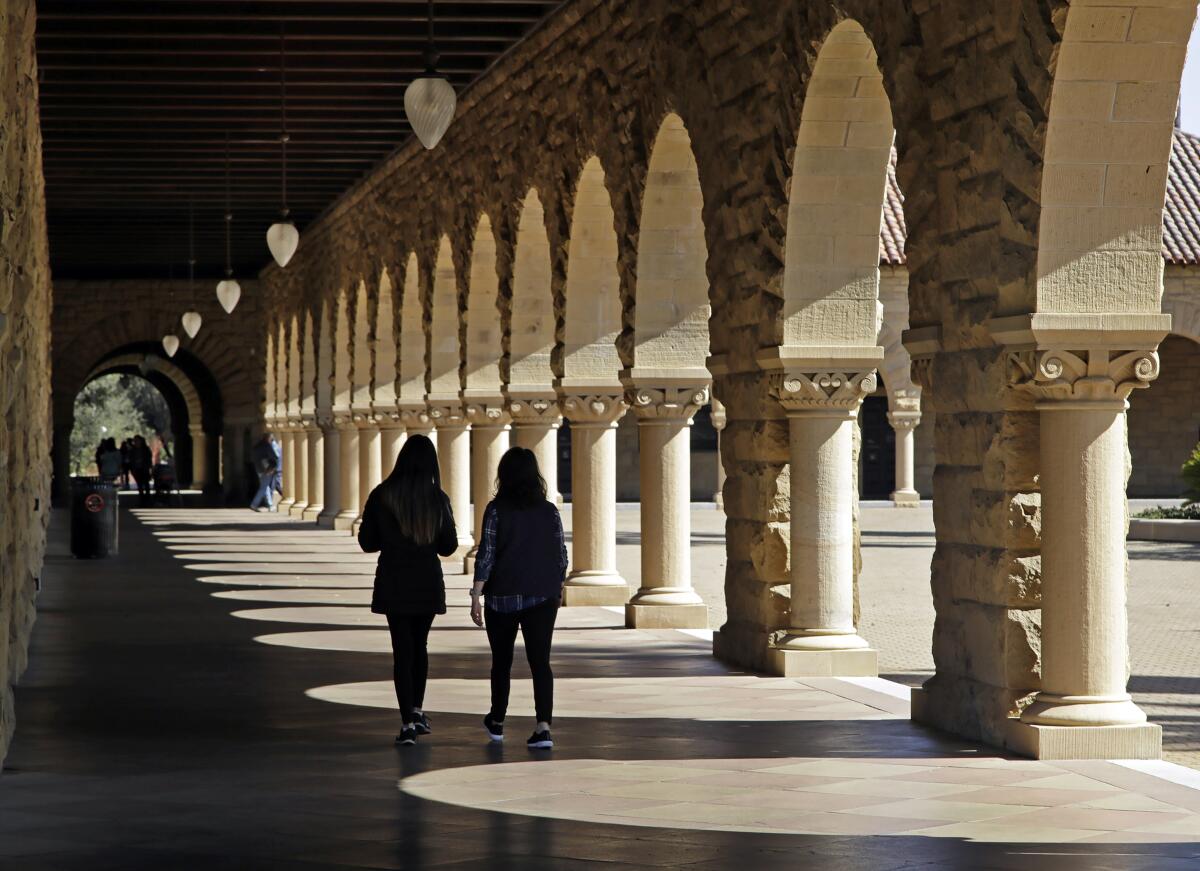Stanford cancels classes as wildfire burns in San Mateo County

- Share via
Stanford University canceled in-person classes Thursday and Friday due to a power outage from a wildfire burning in unincorporated San Mateo County.
The university notified students and faculty that the campus would be closed until power is restored by PG&E. The utility company said they do not have access to the area where electrical equipment was damaged by a wildfire that started burning earlier this week.
“Although PG&E has not provided an update to power restoration, we are preparing for the possibility that it may take days,” Stanford University said on its social media channels on Thursday. “PG&E continues to provide a limited supply of power through a secondary line, but not enough to meet the normal needs of the campus.”
By Wednesday evening, power was restored to hospitals and other high-priority buildings and residences on the campus.
Cassidy Dalva, a rising sophomore at Stanford who works as a research assistant, said she was in a campus lab Tuesday around 2 p.m. when the lights suddenly went out. A few minutes later, everyone in the building was told they should leave it because the air conditioning would go out next. About half an hour later, cellular reception also stopped working.
“A lot of people have been pretty concerned, especially when we didn’t have cellular reception. That was pretty scary,” Dalva said. “I tried to stick with my friends and really not be by myself very often just because there really wasn’t any way to reach someone in case anything happened.”
Dalva noted that although her dorm has power and cellular reception now, she knows of other dorms on campus that are still without power. Students have created a spreadsheet to track which buildings on campus have power and which don’t.
Students also didn’t have access to filtered water in the dormitories during this time. Dalva said that key cards also stopped working temporarily, meaning that students couldn’t enter the residences for a certain period of time.
“The combination of no cellular reception, no wi-fi, no air conditioning — all of that just made a lot of people nervous,” Dalva said. “I will say that people really did come together. That was something that was somewhat calming for me.”
The university provided students in residence halls with flashlights, according to Dalva. Stanford also assigned certain locations as 24-hour respite spaces, where the power is being kept on all day. Students can use power outlets in these locations to charge personal devices. Dalva said these spaces have filled up very quickly over the past couple of days.
According to Stanford alerts to the community, although power restoration to student residences is a priority, it “still falls well short of a full campus restoration.”
Stanford University is about 25 miles east of the fire that was first reported burning in dry vegetation on Tuesday afternoon at the Edgewood County Park. The fire burned 20 acres and as of Thursday is 90% contained.
The cause of the outage remains under investigation, PG&E said in statement on Thursday.
PG&E said it was notified of the outages impacting San Mateo County on Tuesday afternoon at 2:20 p.m. and worked throughout the day to restore power to customers. By Thursday morning, just 13 customers were without power — including Stanford University, PG&E spokesperson Mayra Tostado said.
“We are actively looking to connect impacted customers to other sections of our electric system and will begin repairs as soon as the area is made safe and access is granted by first responders,” Tostado said.
Utility crews are waiting for the clearance from Cal Fire so they can access and repair the damaged electrical equipment.
“We understand how disruptive it is to be without power and are using every tool at our disposal to restore power as quickly as possible,” Tostado said.
More to Read
Sign up for Essential California
The most important California stories and recommendations in your inbox every morning.
You may occasionally receive promotional content from the Los Angeles Times.












